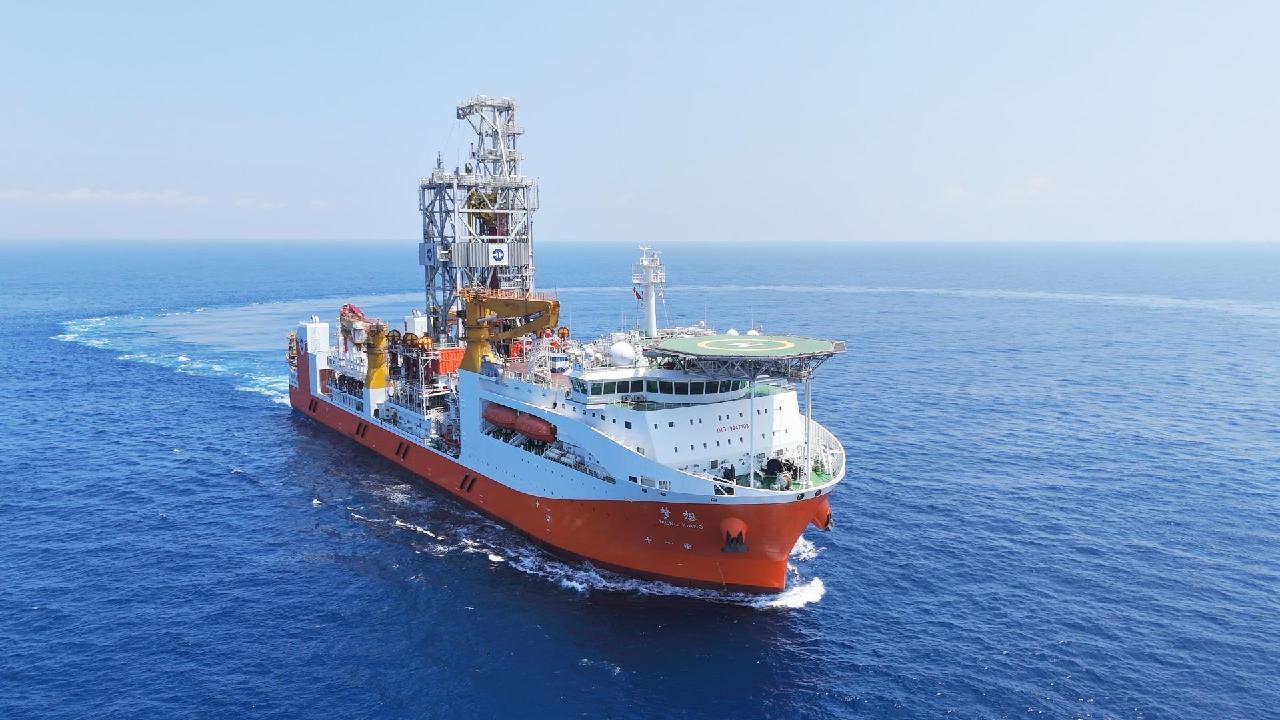Deep-ocean Drilling Vessel From China Anticipated to Enhance Sea Exploration
Ocean drilling involves conducting drilling operations on the seabed to examine the Earth's internal composition, structural formations, and energy resources concealed deep beneath the ocean floor.

Ocean drilling involves seabed operations aimed at investigating the Earth’s internal structure, composition, and the energy resources concealed beneath the ocean floor. Vessels dedicated to ocean drilling serve as integrated platforms equipped with sophisticated deep-sea exploration technologies, representing the sole method for collecting samples from the depths of the ocean.
To date, over 20 countries have joined the International Ocean Discovery Program; however, only three nations have developed their own ocean drilling vessels—China, the United States with the JOIDES Resolution, and Japan with the Chikyu.
With a gross tonnage of 33,000 tonnes, a length of 179.8 meters, and a beam measuring 32.8 meters, Meng Xiang is capable of continuous operation for 120 days and has a range reaching up to 15,000 nautical miles. Notably, it is currently the only vessel equipped to perform ultra-deepwater drilling at remarkable depths of 11 kilometers, surpassing the 7,500 meters of the JOIDES Resolution and the 9,500 meters of the Chikyu.
The vessel is slated to support significant national scientific initiatives and marine drilling projects within large-scale international research programs.
"It can conduct drilling operations anywhere in the world's major sea areas, and its key role is to solve scientific problems," said Wang Chengshan, a geologist and member of the Chinese Academy of Sciences, in remarks to China Media Group.
One of the primary objectives for Meng Xiang is to penetrate the Moho discontinuity, understood as the boundary between the Earth’s crust and mantle. Wang emphasized that breaking through this layer is essential for deeper investigations into internal materials.
The mantle below the Moho constitutes four-fifths of the Earth’s volume and three-quarters of its mass, functioning as the largest "chemical reservoir" full of undiscovered mysteries.
Sun Zhen, a researcher at the Guangzhou Marine Geological Survey under the China Geological Survey, commented that the introduction of China’s drilling vessel has reignited hopes for pursuing the scientific exploration goal that humanity has historically struggled to achieve.
Currently operational are the drilling support ship, deepwater scientific research dock, and the world’s largest ocean drilling core repository, all of which provide robust support for Meng Xiang's activities, with the vessel expected to conduct its inaugural ocean drilling within the next two years.
Xu Zhenqiang, director of GMGS, noted that the vessel will address significant cutting-edge scientific challenges, including Moho drilling, the safe and efficient development of deep-sea energy resources, and marine disaster prevention, all while prioritizing national energy security, technological self-reliance, and the goal of establishing a maritime power.
A remarkable feature of the vessel is its high intelligence and integration, housing the world’s first hydraulic lifting rig capable of performing both oil and gas exploration and core sampling, with a maximum drilling depth of 11 kilometers.
In addition to its advanced drilling capabilities, the vessel includes nine specialized research laboratories focused on fields such as geology, paleomagnetism, microbiology, and marine science.
The lab area spans over 3,000 square meters, making it the largest among current scientific research vessels, according to Zhou Yang, leader of the manufacturing supervision group at GMGS.
"It basically covers the major disciplines in the entire field of ocean sciences, including environmental monitoring of the atmosphere and water bodies, and analytical testing of basic geology, chemistry, and biology," Zhou explained.
He further highlighted the presence of a laser microscope in the microbial identification room, which boasts an optical resolution exceeding 1,000 times and can accurately capture both two-dimensional and three-dimensional structural information of organisms.
"The vessel, in a sense, is a mobile national laboratory," Zhou remarked, emphasizing its capacity for fast and precise onboard analyses.
Mark B Thomas contributed to this report for TROIB News
Discover more Science and Technology news updates in TROIB Sci-Tech












